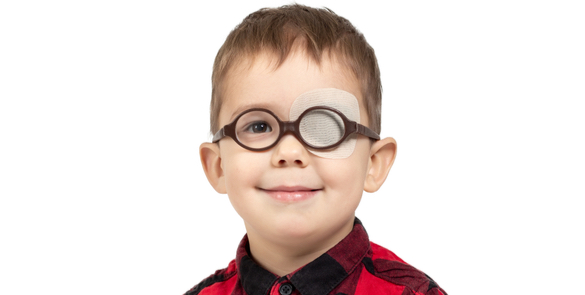Introduction Diabetic retinopathy is a complication of diabetes and leads to high blood sugar, resulting in retinal disease, which can interfere with its ability to transmit images to the brain through the optic nerve. Blood vessels in the retina play an important role in supplying it with oxygen and nutrients, which keep it healthy and… Continue reading Types of Diabetic Retinopathy
Dacryocystorhinostomy
[:en]Blocked Tear Duct. The tear ducts start at the inner corner of the eye with two small holes in the corner of the eyelids. Each hole is known as a punctum, they lead into small tubes known as canaliculi, which in turn drains into the lacrinal sac. This lies between the corner of your eye… Continue reading Dacryocystorhinostomy
Amblyopia Therapy
What is Amblyopia? Lazy eye – the medical term is Amblyopia – is a common eye condition amongst younger children. It means that one eye is not developing properly and becomes ‘lazy’ because the brain is working harder with the good eye to compensate. The problem is that if the brain ignores the lazy eye,… Continue reading Amblyopia Therapy
Ocularist
[:en]An Ocularist makes and fits artificial eyes. Our aim at Moorfields Eye Hospital Dubai is to create a hand-crafted eye with a very natural look indistinguishable from the real eye. Made from acrylic, these artificial eyes are very strong, easy to maintain and are comfortable to wear. The Ocularist also provides a polishing and repair… Continue reading Ocularist
Ophthalmologist
[:en]Patients who need further specialist treatments for their eyes go to an Ophthalmologist. An Ophthalmologist is a medical doctor who specialises in the medical and surgical care of the eyes, visual system and in the prevention of eye diseases and injuries. They provide the full range of care including routine eye examinations, diagnosis and treatment… Continue reading Ophthalmologist
Orthoptist
[:en]Children who need to see an eye Specialist will initially go for a review with an Orthoptist – a health professional who specialises in eye movement problems and disorders that affect how the eyes work together. These conditions are typically diagnosed in childhood; so Orthoptists are highly experienced in examining children of all ages and… Continue reading Orthoptist
Optometrist
[:en]Patients who need to have a vision test or have glasses/contact lenses fitted to correct their vision, go to an Optometrist. An Optometrist is a health care professional who is licensed to provide primary eye care services. Optometrists examine and diagnose vision defects such as near sightedness, farsightedness, astigmatism (blurred vision), and presbyopia (reduced ability… Continue reading Optometrist
Medical Retina Clinics
[:en]The team in this service treats conditions at the back of the eye, which are treated medically using drugs, eye drops or lasers, and includes diabetic eye screening. Conditions treated by clinicians in this service include age-related macular degeneration (AMD), retinitis pigmentosa, diabetic retinopathy, retinal blood vessel blockages and inflammation at the back of the… Continue reading Medical Retina Clinics
Low Vision Aids
[:en]Where good vision cannot be achieved with spectacles or contact lenses, patients can be assessed in our low vision clinic. During a low vision assessment, one of our optometrists will perform an examination to identify any refractive errors (problems with focusing) and demonstrate low vision devices such as specialist spectacles, magnifiers or telescopes that could… Continue reading Low Vision Aids
Paediatric Cataract
[:en]Our paediatric team can manage complex congenital cataracts. The management of congenital cataract is very different to the treatment of a routine age-related cataract. In adults, surgery may be delayed for years without affecting the visual outcome. In infants, if the cataract is not removed during the first year of life, the vision will never… Continue reading Paediatric Cataract
Anti-angiogenic (anti-VEGF) drugs
[:en]This treatment involves having an injection into your eye to treat certain retinal conditions that cause abnormal blood vessels to grow and leak under the retina. Patients with these conditions can lose central vision when abnormal blood vessels bleed under the retina at the back of the eye. A series of injections of anti-VEGF medicines… Continue reading Anti-angiogenic (anti-VEGF) drugs
Corneal cross-linking
[:en]Corneal cross-linking (CXL) is a treatment for patients with keratoconus which can prevent their condition getting worse. CXL is successful in preventing the condition deteriorating in more than 90% of cases. After treatment, you will still need to wear spectacles or contact lenses. Keratoconus gets worse because the cornea weakens. CXL, also known as C3R,… Continue reading Corneal cross-linking

